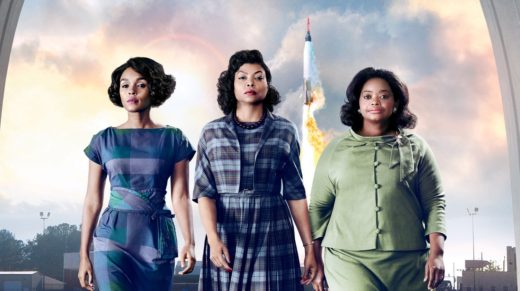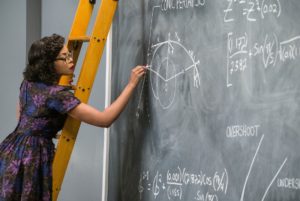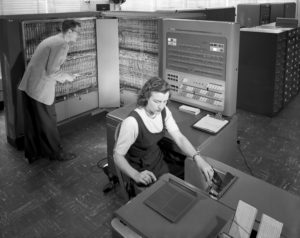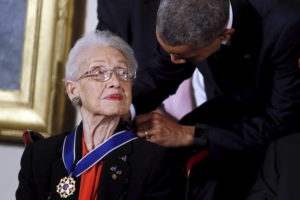
History abounds with examples of unsung science heroes, researchers and visionaries whose tireless efforts led to enormous breakthroughs and advances, often without credit or lasting widespread esteem. This is particularly true for women and minorities, who have historically been under-represented in STEM-related fields. English mathematician Ada Lovelace is broadly considered the first great tech and computing visionary — she pioneered computer programming language and helped construct what is considered the first computing machine (the Babbage Analytical Engine) in the mid-1800s. Physical chemist Dr. Rosalind Franklin performed essential X-ray crystallography work that ultimately revealed the double-helix shape of DNA (Photograph 51 is one of the most important images in the history of science). Her work was shown (without her permission) to rival King’s College biology duo Watson and Crick, who used the indispensable information to elucidate and publish the molecular structure of DNA, for which they would win a Nobel Prize. Dr. Percy Julian, a grandson of slaves and the first African-American chemist ever elected to the National Academy of Sciences, ingeniously pioneered the synthesis of hormones and other medicinal compounds from plants and soybeans. New movie Hidden Figures, based on the exhaustively researched book by Margot Lee Shetterley, tells the story of three such hitherto obscure heroes: Katherine Johnson, Dorothy Vaughn and Mary Jackson, standouts in a cohort of African-American mathematicians that helped NASA launch key missions during the tense 19060s Cold War “space race.” More importantly, Hidden Figures is a significant prototype for purpose-driven popular science communication — a narrative and vehicle for integrated multi-media platforms to encourage STEM diversity and scientific achievement.

The participation of women in astrophysics, space exploration and aeronautics goes back to the 1800s at the Harvard College Observatory, as chronicled by Dava Sobell in The Glass Universe, a companion book to Hidden Figures. These women, every bit as intellectually capable and scientifically curious as their male counterparts, took the only opportunity afforded to them, as human “computers,” literally calculating, measuring and analyzing the classification of our universe. By the 1930s, the National Advisory Committee for Aeronautics, a precursor that would be subsumed by the creation of NASA in 1958, hired five of these female computers for their Langley aeronautical building in Hampton, Virginia. Shortly after World War II, with the expansion of the female workforce and war fueling innovation for better planes, NACA began hiring college-educated African American female computers. They were segregated to the Western side of the Langley campus (referred to as the “West Computers”), and were required to use separate bathroom and dining facilities, all while being paid less to do equal work as their white counterparts. Many of these daily indignities were chronicled in Hidden Figures. By the 1960s, the Space Program at NASA was defined by the two biggest sociopolitical events of the era: the Cold War and the Civil Rights Movement. Embroiled in an anxious race with Soviet astronauts to launch a man in orbit (and eventually, to the Moon), NASA needed to recruit the brightest minds available to invent seemingly impossible math to make the mission possible. Katherine Goble (later Johnson), was one of those minds.

Katherine Johnson (portrayed by Taraji P. Henson) was a math prodigy. A high school freshman by the time she was 10 years old, Johnson’s fascination with numbers led her to a teaching position, and eventually, as a human calculator at the Langley NASA facility. Hand-picked to assist the Space Task Group, portrayed in the movie as Al Harrison (Kevin Costner), a fictionalized amalgamation of three directors Johnson worked with in her time at NASA, she had to traverse institutionalized racism, sexism and antagonistic collaborators in her path. Johnson would go on to calculate trajectories that sent both Alan Shepard and John Glenn into space, as well as key data for the Apollo Moon landing. Supporting Johnson are her good friends and fellow NASA colleagues Dorothy Vaughan (Octavia Spencer) and Mary Jackson (Janelle Monáe). Vaughan herself was a NASA pioneer, becoming the first black computing section leader and IBM FORTRAN programming expert. Jackson became the first black engineer at NASA, getting special permission to take advanced math courses in a segregated school.
Katherine Johnson’s legacy in science, mathematics, and civil rights cannot be understated. Current NASA chief Charles Bolden thoughtfully paid tribute to the iconic role model in Vanity Fair. “She is a human computer, indeed, but one with a quick wit, a quiet ambition, and a confidence in her talents that rose above her era and her surroundings,” he writes. The Langley NASA facility where she broke barriers and pioneered discovery honored Johnson by dedicating the building in her name last May. Late in 2015, Johnson was bestowed with a Presidential Medal of Freedom by President Barack Obama.
Featured prominently in Hidden Figures, technology giant IBM has had a long-standing relationship with NASA ever since the IBM 7090 became the first computing mainframe to be used for flight simulations, with the iconic System/360 mainframe engineering the Apollo Moon landing. Although IBM mainframes are no longer in use for mathematical calculations at NASA, they are partnering through the use of artificial intelligence for space missions. IBM Watson has the capability to sift through thousands of pages of information to get pilots critical data in real time and even monitor and diagnose astronauts’ health as a virtual/intelligence agent.

More importantly, IBM is taking a leadership role in developing STEM outreach education programs and a continued commitment to diversifying the technology workforce for the demands of the 21st Century. 50 years after Katherine Johnson’s monumental feats at NASA, the K-12 achievement gap between white and black students has barely budged. Furthermore, a 2015 STEM index analysis shows that even as the number of STEM-related degrees and jobs proliferates, deeply entrenched gaps between men and women, and an even wider gap between whites and minorities, remain in obtaining STEM degrees. This is exacerbated in the STEM work force, where diversity has largely stalled and women and minorities remain deeply under-represented. And yet, technology companies will need to fill 650,000 new STEM jobs (the fastest growing sector) by 2018, with the highest demand overall for so-called “middle-skill” jobs that may only require technical or community college preparation. Launched in 2011 by IBM, in collaboration with the New York Department of Education, P-TECH is an ambitious six-year education model predominantly aimed at minorities that combines college courses, internships and mentoring with a four year high school education. Armed with a combined high school and associates’ degree, these students would be immediately ready to fill high-tech, diverse workforce needs. Indeed, IBM’s original P-TECH school in Brooklyn has eclipsed national graduation rates for community college degrees over a two-year period, with the technology company committing to widely expanding the program in the coming years. Technology companies becoming stakeholders in, and even innovators of, educational models and partnerships can have profound impacts in innovation, economic growth and diminishing poverty through opportunity.

Dovetailing with the release of Hidden Figures, IBM has also partnered with The New York Times to launch their first augmented reality experience. Combining advocacy, outreach and data mining, the free, downloadable app called “Outthink Hidden” combines the inspirational stories portrayed in Hidden Figures with digitally-interactive content to create a PokemonGo-style nationwide hunt about STEM figures, historical leaders, places and areas of research across the country. The app can be used interactively at 150 locations in 10 U.S. cities, STEM Centers (such as NASA Langley Research Center and Kennedy Space Center) and STEM Universities to learn not just about the three mathematicians featured in Hidden Figures, but also other diverse STEM pioneers. Coupled with the powerful wide impact of Hollywood storytelling and a complimentary book release, “Outthink Hidden” could be an important prototype for engaging young tech-savvy students, possibly even in organized, classroom environments, and promoting interest in exploring STEM education, careers and mentorship opportunities.
There are no easy solutions for reforming STEM education or diversifying the talent pool in research labs and technology companies. But we can provide compelling narrative through movies and TV shows, and, increasingly, digital content. Perhaps the first step to inspiring and cultivating the next Katherine Johnson is simply to start by telling more stories like hers.
View a trailer for Hidden Figures:
*****************
ScriptPhD.com covers science and technology in entertainment, media and advertising. Hire our consulting company for creative content development. Follow us on Twitter and Facebook. Subscribe to our podcast on SoundCloud or iTunes.